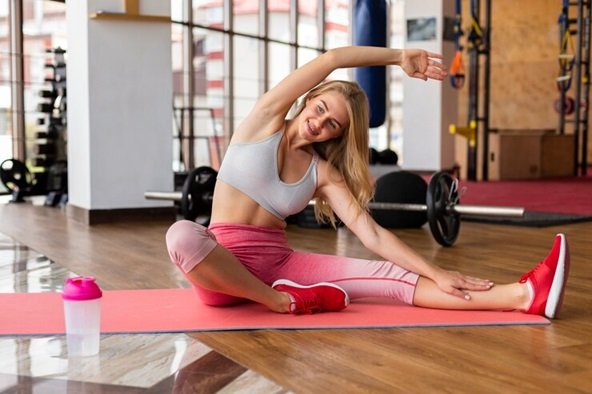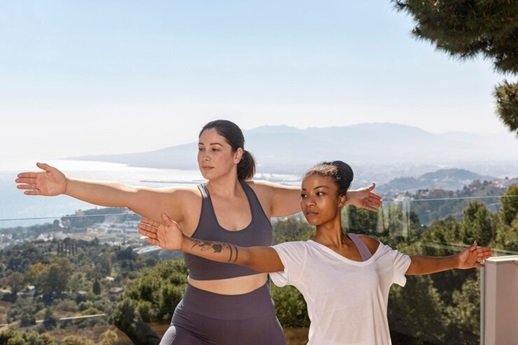Cardio exercise is a fundamental component of any fitness routine, especially for those looking to improve heart health, build endurance, burn calories, and enhance overall well-being. For beginners, stepping into the world of cardio can be intimidating. This guide aims to make that first step easier by breaking down the basics, highlighting the benefits, and showcasing simple, effective cardio exercises that are perfect for beginners. Let’s dive into everything you need to know to kickstart your cardio journey with confidence.
What is Cardio Exercise?
Cardio, short for cardiovascular exercise, refers to any activity that raises your heart rate and gets your blood circulating faster through your body. This type of exercise is beneficial for your heart, lungs, and circulatory system. Common forms of cardio include running, cycling, swimming, and high-energy workouts that engage multiple muscle groups.
For beginners, cardio doesn’t need to be intense or lengthy. Starting with moderate exercises and gradually increasing intensity and duration is the best approach to building a sustainable routine.
Benefits of Cardio Exercise
Before diving into the exercises, it’s essential to understand the many benefits cardio offers, especially for beginners.
1. Improves Heart Health
Engaging in regular cardio exercise strengthens the heart, allowing it to pump blood more efficiently. This can lower blood pressure, reduce the risk of heart disease, and improve circulation.
2. Boosts Endurance and Energy Levels
Cardio training enhances your stamina and endurance over time, making everyday activities feel less tiring. Improved endurance also provides a sense of accomplishment and keeps you motivated.
3. Burns Calories and Supports Weight Loss
Cardio is highly effective for burning calories, which can help you lose or maintain weight. Combining cardio with a healthy diet is one of the best ways to achieve a sustainable weight loss routine.
4. Enhances Mental Health
Exercise, including cardio, releases endorphins—hormones that help reduce stress, anxiety, and depression. Cardio can serve as a mood booster and help combat mental health issues.
5. Improves Lung Capacity
Cardio helps improve your lung capacity, which means you’ll be able to take in more oxygen, and your body will be better at using it. This benefit can make daily activities, as well as other exercises, feel easier over time.
6. Supports a Healthy Immune System
Studies have shown that regular moderate cardio exercise can strengthen the immune system, helping to fight off illnesses and keeping you feeling healthier overall.
Preparing for Cardio: Tips for Beginners
Starting cardio as a beginner doesn’t require special equipment, but there are a few steps to ensure you get off on the right foot.
1. Wear Comfortable Clothing and Footwear
- Invest in a pair of well-fitting, supportive shoes to prevent foot injuries.
- Choose lightweight, breathable clothing to keep cool and comfortable.
2. Start Slow and Set Realistic Goals
- Begin with low-intensity exercises and set small, achievable goals, like walking for 10 minutes daily.
- Gradually increase intensity, duration, or distance over time to avoid burnout and reduce injury risk.
3. Warm-Up and Cool Down
- A warm-up prepares your muscles and joints for movement, reducing the risk of strain.
- Cooling down after exercise helps bring your heart rate down gradually and can aid in recovery.
4. Stay Hydrated
- Drinking water before, during, and after your workout keeps you hydrated, helping prevent fatigue and cramps.
5. Listen to Your Body
- Pay attention to how your body feels during exercise. If you feel dizzy, overly tired, or experience any pain, stop and rest.
Beginner-Friendly Cardio Exercises
Here’s a list of cardio exercises that are perfect for beginners. Each exercise is simple to perform and requires little to no equipment, making it easy to start in any environment.
1. Walking
Walking is one of the most accessible forms of cardio for beginners. It’s low-impact, meaning it’s gentle on your joints, yet effective for building endurance and burning calories.
- How to Do It: Start with a brisk walk around your neighborhood or on a treadmill. Aim for 15-30 minutes, gradually increasing as you build stamina.
- Tip: Swing your arms while walking to engage more muscles and increase calorie burn.
2. Jogging or Light Running
Once you’ve built up stamina with walking, consider progressing to jogging or light running. This exercise strengthens the cardiovascular system and builds lower body endurance.
- How to Do It: Start with a slow jog, alternating between walking and jogging for short intervals.
- Tip: Focus on maintaining a steady pace rather than speed, especially when beginning.
3. Jumping Jacks
Jumping jacks are a great full-body cardio workout that requires no equipment and can be done anywhere. This exercise also helps improve coordination.
- How to Do It: Stand with your feet together and arms at your sides. Jump your feet out to shoulder-width while raising your arms overhead, then return to the starting position. Repeat for 30 seconds to 1 minute.
- Tip: Land softly on your feet to reduce impact on your joints.
4. Cycling
Cycling, either on a stationary bike or a regular bicycle, is an enjoyable cardio exercise that’s easy on the joints and offers a good cardiovascular workout.
- How to Do It: Start at a comfortable pace for 10-20 minutes, focusing on maintaining a steady pedal rhythm.
- Tip: Adjust the bike seat to a height where your knees are slightly bent at the lowest pedal point to prevent knee strain.
5. Dancing
Dancing is a fun way to get your heart rate up without feeling like you’re working out. Whether you’re following an online dance workout or just moving to your favorite songs, dancing is a great cardio option.
- How to Do It: Put on some upbeat music and dance to your heart’s content. Aim for 15-30 minutes.
- Tip: Don’t worry about perfecting any moves; just focus on moving your body and having fun.
6. High-Knees
High-knees are an excellent way to increase your heart rate while also engaging your core and legs. They’re also easy to perform in small spaces.
- How to Do It: Stand with your feet hip-width apart. Lift your right knee toward your chest, then switch to your left knee in a running motion.
- Tip: Focus on keeping your knees as high as possible to engage your abs.
7. Jump Rope
Jump rope is a highly effective cardio workout that helps improve coordination and endurance. This exercise can burn a significant amount of calories in a short time.
- How to Do It: Start with short intervals (30 seconds to 1 minute), and gradually increase as your endurance improves.
- Tip: Use a rope length that reaches your armpits when standing on the middle of it to ensure proper form.
8. Swimming
Swimming is a full-body workout that is gentle on the joints, making it perfect for beginners who want a low-impact workout. It’s also excellent for building lung capacity and endurance.
- How to Do It: Swim at a relaxed pace for 10-15 minutes, gradually increasing the duration as you get comfortable.
- Tip: Focus on your breathing to stay relaxed and avoid getting fatigued quickly.
9. Stair Climbing
Stair climbing can be done indoors or outdoors and is great for toning the legs while providing a solid cardio workout.
- How to Do It: Find a set of stairs and start with a steady pace. Climb up and down for 10-15 minutes, increasing the duration gradually.
- Tip: Use the handrail if needed for stability, and focus on stepping lightly to reduce joint impact.
10. Elliptical Training
The elliptical machine is ideal for beginners, especially for those looking for a low-impact cardio workout. It simulates walking or running while being easy on the knees and joints.
- How to Do It: Begin with a comfortable speed and incline for 10-20 minutes.
- Tip: Hold onto the handles to engage your upper body or use the machine without the handles to challenge your balance.
Creating a Beginner Cardio Routine
For beginners, it’s best to start with short, manageable sessions and gradually increase your workout duration and intensity. Here’s a sample beginner cardio routine to get you started:
| Day | Activity | Duration |
|---|---|---|
| Monday | Brisk Walking | 20 minutes |
| Tuesday | Jumping Jacks | 10-15 minutes |
| Wednesday | Cycling | 20 minutes |
| Thursday | High Knees + Jump Rope | 15 minutes |
| Friday | Jogging | 20 minutes |
| Saturday | Dancing | 20-30 minutes |
| Sunday | Rest or Light Stretching | – |
Tips for Staying Motivated
Staying motivated can be challenging, especially when starting a new fitness routine. Here are a few tips to help keep you on track:
- Set Small Goals: Begin with short-term goals like working out three times a week or reaching a 10-minute walk daily.
- Track Your Progress: Use a fitness tracker or journal to record your progress and celebrate your achievements.
- Find a Workout Buddy: Exercising with a friend can make cardio sessions more enjoyable and keep you accountable.
- Mix It Up: Try different types of cardio exercises to avoid boredom and keep your workouts interesting.
Final Thoughts
Cardio exercises are a fantastic way to improve overall health, and as a beginner, there are plenty of options to ease you into a regular routine. By following the tips, exercises, and routine outlined in this guide, you’ll be well on your way to enjoying the benefits of cardio fitness. Remember, consistency is key. Start slow, stay motivated, and listen to your body as you build your endurance and strength over time.



